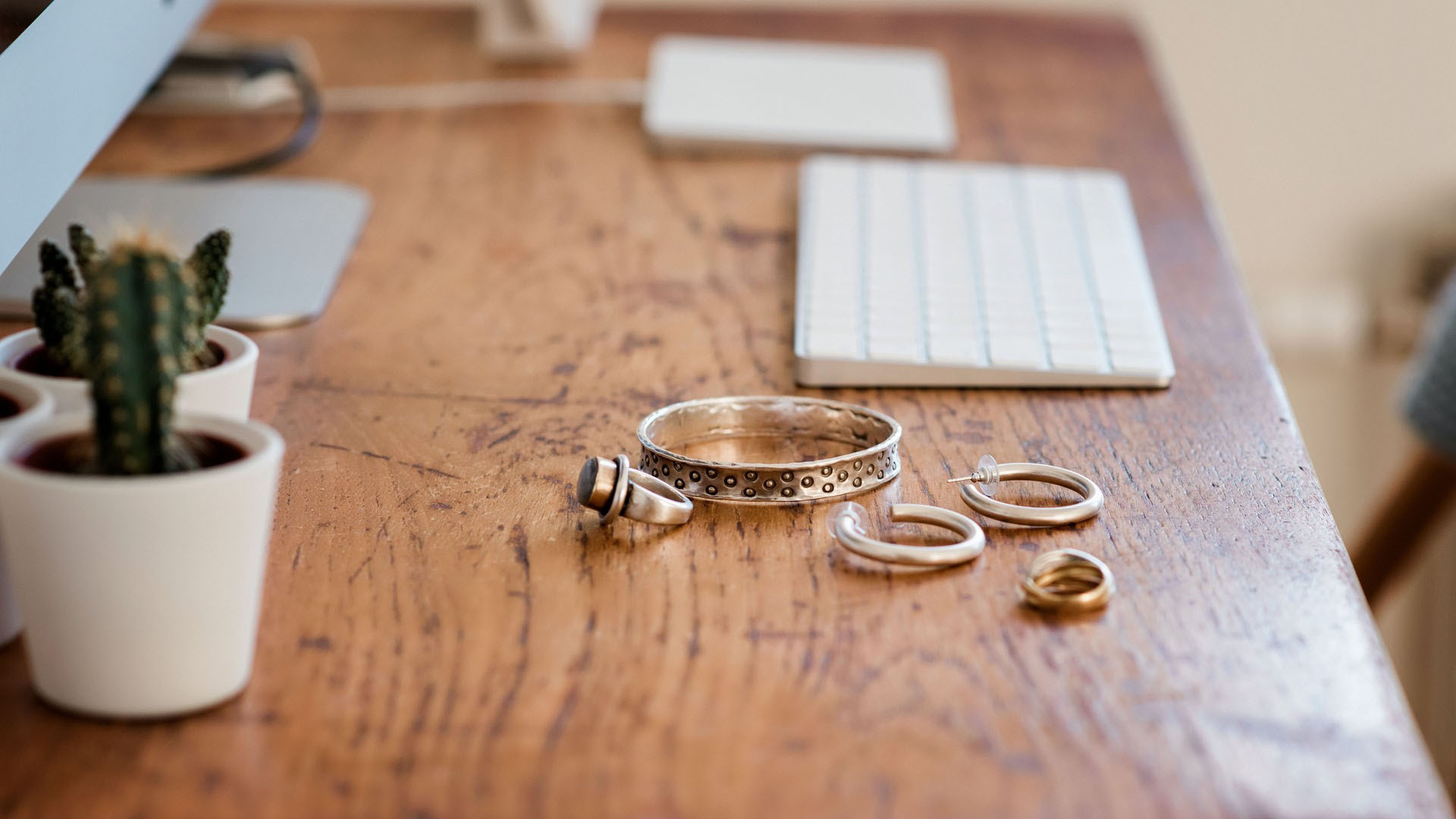How to clean silver jewellery at home for a super-sparkly finish
Keep your favourite silver jewellery sparkling – like the day you got it – with these tips

Do you have a collection of silver jewellery that you've bought yourself or received as a gift? Or, perhaps, you've been busy making your own custom pieces using jewellery making kits. Either way, you may notice over time that your favourite items lose their silver sheen and take on a dingy look. Don’t be alarmed – it’s just a layer of tarnish that can be easily removed with a little cleaning, which will see them return to their original condition in no time.
Why does silver tarnish?
Silver tarnishes as a result of being exposed to pollutants in the air (typically small amounts of hydrogen sulphide), being in contact with materials containing sulphur compounds (such as rubber bands), from moisture in the air (humidity), or even from sweaty fingers...
While sweat and oils from your skin can cause corrosion, or make your jewellery more susceptible to oxidation, wearing your favourite pieces frequently can actually protect them. Sounds counterintuitive, but friction against your skin or clothing can prevent tarnish from building up.
So, is silver always susceptible to tarnish? That depends. Sterling silver is an alloy, made up of 92.5% silver – that’s why it’s often referred to by the experts (and jewellery lovers) as 925 sterling silver. However, this alloy also contains a small percentage (7.5%, to be exact) of copper or other metals and it’s those that react and cause tarnish. Interestingly, it's the addition of these other metallic elements that give sterling silver more strength and durability that allow silversmiths and jewellers to make more intricate pieces.
That said, as silver jewellery lends a light, understated elegance to any look you’ll want to keep it looking that way. How? By cleaning it very carefully. Need a little help? We’ve got some tips.
READ MORE:
- Grace and Flora kits: Making your own silver jewellery has never been easier
- Jewellery repairs you can do yourself - without the help of a professional
- How to make a bead bracelet: the ultimate guide to getting started
How to clean silver jewellery
Although there are various silver clothes and polishes available on the market, you can clean it yourself with simple supplies that you probably already have at home.
Sign up to our free daily email for the latest royal and entertainment news, interesting opinion, expert advice on styling and beauty trends, and no-nonsense guides to the health and wellness questions you want answered.
One popular method uses bicarbonate of soda and boiling water.
Another method uses washing-up liquid.
You could also try lemon juice and olive oil, though this mixture may be more useful on larger pieces. For chains, delicate items and more complex designs, soaking in one of the above solutions is simpler.
To dry your jewellery, you can wipe it gently with a dry microfibre or silver jewellery polishing cloth. Avoid vigorous, circular scrubbing with a rough cloth – this can put tiny scratches on your jewellery.
Other DIY suggestions include soaking the piece in a mixture of vinegar and bicarbonate of soda, or covering it in a paste made of one-part water and two-parts bicarbonate of soda (then rinsing it and letting it dry).
How often should you clean your jewellery?
You want to avoid overcleaning your silver, as by zealously shining it you’ll run the risk of scratching or corroding it. Additionally, in a strange twist, pristine silver jewellery often tarnishes more quickly, whereas you may not notice additional build-up on a very slightly tarnished piece, for quite some time.
You may even like the appearance of a slight tarnish, as it can accentuate lines and details and give the jewellery an antique appearance. However, for super-shiny silver, you'll want to keep an eye on your pieces and clean as necessary.
How to care for your silver jewellery
Silver is more likely to tarnish when it's improperly stored and left unused for long periods of time – a great reason to wear it more frequently!
However, that isn’t always possible or practical so, to prevent tarnish from building, try storing the jewellery in a tarnish-resistant bag in an area with low humidity. Avoid areas near the bath or sinks, and use chalk, charcoal or silica gel bags to help absorb moisture.
Take off your jewellery before washing your hands, bathing, swimming or preparing food – onions and eggs are big culprits when it comes to making silver tarnish more quickly (due to the sulphides and chlorides they contain).
In addition, try to limit exposure to perfumes, lotions and other cosmetics. After wearing, carefully wipe your jewellery with a soft cloth to remove any oils or sweat residue.
If your jewellery tarnishes quickly and you find yourself cleaning it constantly, consider taking it to a professional to have it sealed with a lacquer.
Even if worn frequently, silver and sterling silver can last for decades when properly cared for. So, don't get discouraged by the sight of a little tarnish – especially now that you know what to do! Take good care of your silver and, one day, you may find yourself sharing your favourite pieces with the next generation.
Amy Hunt is an experienced digital journalist specialising in homes, interiors and hobbies. She began her career working as the features assistant at woman&home magazine, before moving over to the digital side of the brand where she eventually became the Lifestyle Editor up until January 2022. Amy won the Digital Journalist of the Year award at the AOP Awards in 2019 for her work on womanandhome.com.

